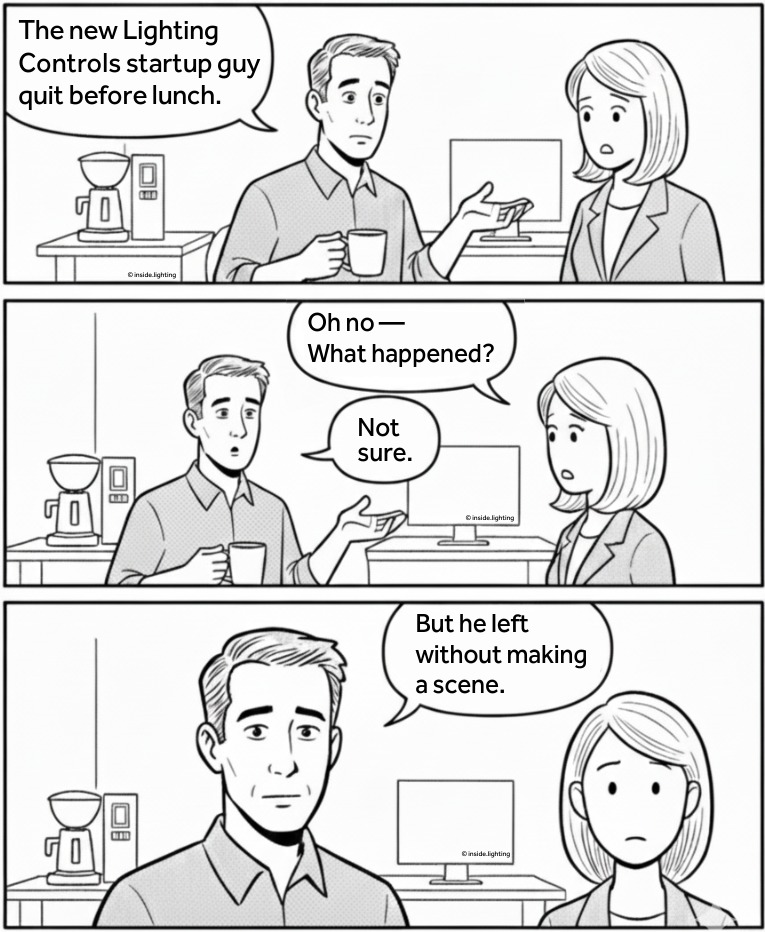May 17, 2025
5 Things to Know: May 17

A niche acquisition closes. Plus, bad glare and high max-mins disrupt a professional sports tournament.
Here's a roundup of some of the week's happenings curated to help lighting people stay informed.
1 . Orion Discloses CEO Exit Package
LED lighting maker Orion Energy Systems Inc. has detailed the severance package for former CEO Michael Jenkins, who stepped down in mid-April. Jenkins will receive $633,421 in severance, which includes 1.5 times his base salary of $382,500, a similar multiple of his average recent annual bonuses, and a prorated target bonus for fiscal 2026. He will also receive 18 months of employer-paid COBRA coverage and accelerated vesting of 321,811 restricted stock shares that were scheduled to vest over the next two years. All of his unvested performance-based and restricted cash awards have been forfeited. Orion’s stock price at Friday’s close was $0.74 per share.
Notably, Jenkins’ base salary had decreased during his tenure. When he was appointed in late 2022, his salary was initially set at $425,000, but it had been reduced to $382,500 by the time of his departure. His successor, Sally Washlow, now earns the same $382,500 base salary and is receiving a $500,000 signing bonus — primarily earmarked for purchasing Orion stock.
2. DALS Lighting Acquires Remington Lighting
Quebec-based DALS Lighting has acquired Remington Lighting, a hospitality-focused lighting provider, in a move that extends DALS’ footprint across the North American hospitality market. Remington Lighting, which describes itself as a supplier of luxury hotel and hospitality lighting, brings longstanding relationships with global hotel brands.
DALS Lighting goes to market through multiple channels, including commercial and industrial specification agents across the United States and Canada, showroom agents, and online platforms such as Lumens, Wayfair, and Lightology. The company also maintains a permanent showroom presence at Dallas Market Center, enabling direct engagement with design professionals and buyers.
Operations for both companies will continue under existing leadership, with an emphasis on maintaining service continuity and delivering added value to clients.
3. Scientists Unveil a New Color, “Olo”
Researchers at the University of California, Berkeley have developed a novel system named “Oz” that uses precisely targeted laser pulses to activate individual photoreceptors in the eye, enabling people to perceive entirely new visual experiences — including a previously unseen color dubbed “olo.” This blue-green hue, described as a hyper-saturated peacock green, was produced by stimulating only the M-cones in the human retina, a feat made possible through Oz’s ability to control up to 1,000 cone cells simultaneously. “It was like a profoundly saturated teal … the most saturated natural color was just pale by comparison,” said Austin Roorda, professor at Berkeley’s Herbert Wertheim School of Optometry & Vision Science.

The research, published in Science Advances and funded by the National Institutes of Health and the Air Force Office of Scientific Research, highlights not only a breakthrough in perceptual neuroscience but also a powerful new method for studying vision loss. “We’ve created a system that can track, target and stimulate photoreceptor cells with such high precision that we can now answer very basic, but also very thought-provoking, questions about the nature of human color vision,” said James Carl Fong, a Berkeley doctoral student in electrical engineering and computer sciences.
4. Lighting Glare and Max-Min Extremes Sideline Star Pickleball Players
The Conway Bulletin, which closely follows developments in professional pickleball, reported that Ben Johns and Collin Johns withdrew from the 2025 MLP Columbus tournament due to unsafe lighting conditions. Multiple sources described the venue as having uneven illumination, with harsh glare from overhead fixtures and dim, shadow-heavy corners that disrupted ball tracking. Players noted inconsistent lux levels across the court surface — conditions that pose a real hazard in a sport where split-second reaction times are critical. For Ben Johns, who has partial vision loss in one eye from a childhood accident, those inconsistencies weren’t just frustrating—they were disqualifying.
Lighting complaints reportedly began surfacing during warm-ups, but the venue pressed on without substantive adjustments. A league official, speaking off the record, cited "logistical constraints" around replacing or repositioning fixtures mid-tournament. Spectators in the upper rows also reported flickering and color temperature mismatches that made it harder to follow play.
The lighting issues were serious enough that the Johns brothers made the call to withdraw altogether. While the Carolina Hogs scramble to reconfigure their lineup, the bigger question looms: how did an elite MLP venue allow its lighting system to fall so far below professional sport standards in the first place?
5. USGBC Opposes Tax Credit Repeal
The U.S. Green Building Council (USGBC) is urging Congress to reject proposed budget reconciliation legislation that would repeal key federal tax incentives supporting energy efficiency and green construction. Elizabeth Beardsley, senior policy counsel at USGBC, warned that eliminating measures such as the Section 25C homeowner energy-efficiency credit and the Section 45L new home construction credit could sharply curtail investment in construction and real estate, raise energy costs, and stall projects nationwide. “Projects will be canceled. Investment will slow. And the people who will lose out the most are workers in the building trades,” Beardsley said, noting the significant reliance on these incentives by homebuilders and contractors.
The proposed legislation would also accelerate the phase-down of the Investment Tax Credit, repeal clean vehicle infrastructure incentives, and rescind billions in funding for Department of Energy and Environmental Protection Agency programs that promote building innovation and sustainability. According to the USGBC, more than 2.3 million households claimed the 25C credit in 2023, and nearly 350,000 new ENERGY STAR homes were built using the 45L credit. USGBC emphasized that the cuts would not only undermine ongoing energy efficiency and housing affordability efforts but also jeopardize the U.S. role in leading green building innovation and climate-related economic opportunities.










